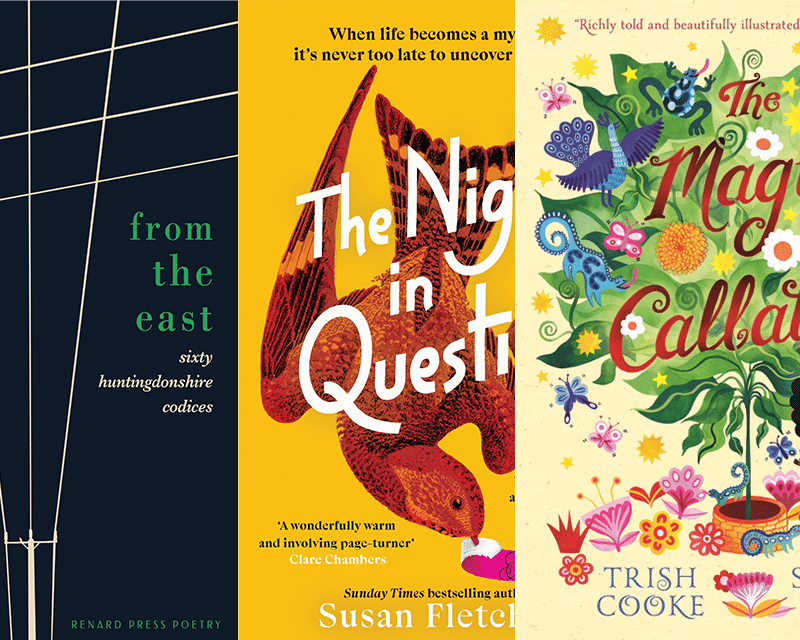- Collected
- Article
Taking Orders From Monica
Conjuring a life from the bare bones

- 20 June, 2016
- Bethan Roberts
‘RAWLINS, MONICA (1903–1990). Artist and goose-breeder, Brynmeheryn, Ystrad Meurig.’
So read the catalogue entry in the National Library of Wales’s archive — and thus began my ‘relationship’ with Monica Rawlins. I suppose that, from the start, I was intrigued by its hint of sadness — or, at least, compromise. After all, the word ‘artist’ comes before ‘goose-breeder’. The story of how a goose-breeder became an artist would be one thing; the story of how an artist became a goose-breeder, quite another.
I’d been commissioned to write a drama series for Radio 4’s ‘Writing the Century’. The brief was strict, in that the series had to spring from the unpublished letters and/or diaries of an ordinary person of the 20th century. In addition, the producer wanted a Welsh story that wasn’t about World War II, because they’d already had enough of those.
I like writing fiction out of historical research – for me, it reduces some of the terror of the blank page – but this radio project filled me with trepidation. The boundaries were so tight that I was concerned the actual series would be creaky and unconvincing. Was I about to shoe-horn the facts of history into drama, like those awful docu-dramas on TV?
My producer had sent through a list of possible subjects, and having picked Monica purely on the strength of that ‘artist and goose-breeder’ description, I took a deep breath and made a trip to the National Library of Wales in Aberystwyth to check out her diaries and letters. I had no idea what I might find. All I knew, from a quick Google search, was that Monica had attended the Slade School of Art and had moved from the family pile at Syston, Gloucestershire, to Brynmeheryn, a farmhouse near Aberystwyth. The only example of her work that I could find was an advertisement for the London Tramways, but still I hoped to encounter a free-spirited bohemian gal who’d swapped the confines of aristocratic society for the sexy abandon of the artist’s life. I hoped for intrigue, seduction and spilled paint.
In the almost empty library, I was presented with an uncomfortable chair and a large cardboard box full of Monica’s papers. I’m pretty sure that no one had requested these in the twenty or so years they’d been in the archive. There were no letters at all, which was disappointing, but there were many diaries. However, there were huge gaps in the chronology. After a few diaries from her teenage years, Monica’s journals from the Slade were missing, as were those from the war years, which seemed odd, but at the time I didn’t give this much thought. Most of the diaries were from the 1950s and 60s, so I decided to concentrate on these — after all, my deadline was short, and I had only two days in the library.
By lunchtime of the first day, I had read pages of information about goose-breeding and Monica’s struggle to maintain her large and ancient farmhouse and the acres of land which surrounded it. There was not much about art. Instead there was a great deal about fences: fences broken by her neighbour’s sheep, blown down by gales, trespassed by wild animals. It was as if Monica was engaged in a constant battle with her environment. I also gleaned that she had a very significant ex, who was present when she bought Brynmeheryn in the late 1940s, but who was barely mentioned in the 1950s diaries. I didn’t have much in the way of an actual story, and I was constantly frustrated by the way Monica, like most diary-keepers, left out vital information about characters and situations. Of course, Monica was writing her diary for herself and, unlike a novelist, she didn’t need to explain anything. It was clear that I wasn’t going to be handed a plot on a plate, but I hoped it would be all right, because I had Monica’s voice.
She wrote of ‘rain so stabbing that one expected to find one’s face an open wound after going out in it.’ On the page, at least, Monica Rawlins was entertaining company. Her writing was often complaining, sometimes poetic, occasionally rude, and frequently hilarious. Contrary to my expectations, she was a royalist who deeply admired Princess Margaret’s decision not to marry her divorced lover, Peter Townsend (which seemed to Monica ‘a supreme gesture of control and sacrifice which will strengthen – or rather re-introduce – the moral code everywhere’), and an absolute snob, particularly when it came to the local farmers (her neighbour, Tom Evans, she called a ‘typical male Welsh peasant’, amongst other things).
I saw immediately that I could get a lot of fun from her tense relationship with her neighbours, whom she loved to boss around. My father comes from a family of Welsh farmers, so the prospect of skewering this dynamic filled me with glee. But there was also, as I’d suspected, a lot of sorrow in Monica’s writing — at least between the lines. She couldn’t bring herself to write her ex-lover’s name, referring to him only as ‘A’, and it seemed to me that it was no accident that her writings from the war years were missing, as this was when her affair with ‘A’ (who was married, and German, as I later discovered) would have begun. I strongly suspect that she destroyed all her letters and diaries from this period. And only occasionally did she mention an attempt to paint or draw, which usually left her unsatisfied. Indeed, I found very few surviving examples of her work — other than that London Tramways poster.
I met with my producer, and told her the news: I didn’t have a story, really, but I did have a voice, and I thought I could perhaps make a drama from Monica’s determination to live her life as an independent woman without her lover, no matter how much she missed him. Luckily for me, Helen didn’t blanch. She agreed that Monica herself was interesting enough to sustain the series. It was Helen’s confidence in the drama that gave me the courage to tackle Monica.
I now had to try and bring my version of Monica to life, and to make sense of her story from the patchy information I had. As I re-read the entries, selected my material and began to write the scenes, I felt that I was entering into a relationship with Monica. It was an intense and often fraught affair. Just as I thought she was giving me something really good – the information that her beloved brother was very ill, for example – she would cut me off and start writing again only after his memorial service was over. There was no mention of her grief, although I sensed it in the things she did describe, such as her distress over a routine visit to the dentist, and her renewed contempt for her neighbours. In fact, there were none of the details a writer would expect someone to include at such a time: how the service went, for instance, or how other family members reacted. Her brother was dead, and it was as if, for her, it was done, over; she was back with the blessed geese, writing endless lists of pens built, fences re-erected, eggs incubated and chicks hatched.
Monica also refused me most of the juicy details about her love affair and, almost out of spite, I built the drama around the loss of ‘A’, a loss that, it seemed to me, informed her whole life. In the absence of knowledge, it was extremely tempting to make up the occasional scene. ‘Writing the Century’ demands that selected extracts from the subject’s letters or diaries are used verbatim within the script, but the writer is free to imagine the scenes ‘in between’ the diary entries. I did entertain the idea of just making stuff up. After all, who would have known? But, in fact, Monica’s voice was so strong that I found it hard to begin fabricating scenes. She was not my creation, and I couldn’t push her around in the way I could a character in a novel. I also had a sense that, if the drama was to ring true, I had to stay true to Monica. My rule of thumb was that I would not completely fabricate anything: every scene would be based on fact, suggested by something Monica wrote.
Despite my initial misgivings, it was strangely liberating to be taking my orders from Monica. Although I was bound by the restrictions of her diaries, those restrictions became the story. And the blessed geese kept coming back: Monica’s devotion to them was apparent on every page, and I found I couldn’t leave them out. To my surprise, those birds were a source of real joy – as well as sadness – for Monica. I even included a scene in which she mended a fence with her neighbour, Tom Evans. In the end, Monica dictated the boundaries, just as she had in life.
You might also like:
No facts, only versions
Memoirs are as much about what is excluded as what is included. This edition examines how you can evoke the…
RLF Fellows’ News: April 2024
Publishing News RLF Fellow Trish Cooke’s new children’s book, The Magic Callaloo, is set to be published by Walker Books…
Susan Fletcher on outsiders in fiction – literal and imagined
I’ve always known that I’ve preferred to be outside. To be an outsider – literally, and, specifically, amongst wild places…


